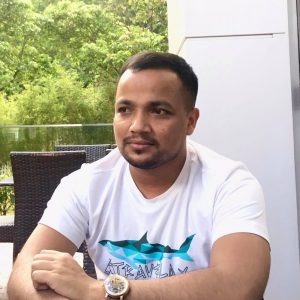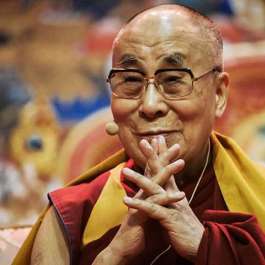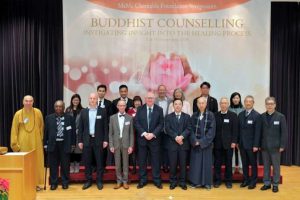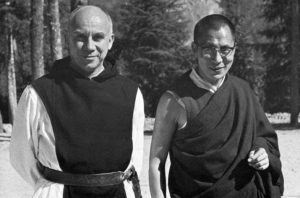
The Indonesian public has been captivated in recent weeks by the presence of 40 monks from Indonesia, Malaysia, Singapore, and Thailand, along with hundreds of devotees, stopping at a number of cities as part of a spiritual pilgrimage that began during Vesak last month, on 23 May.
The pilgrims walked a distance of about 80 kilometers from Buddha Jayanti Wungkal Kasap Temple in the port city of Semarang in Central Java to the historic Borobudur temple complex in Magelang Regency, some 40 kilometers northwest of Yogyakarta.
The term thudong, derived from the Pali dhutanga (austere practices), signifies the solitary, wandering, ascetic and meditative lifestyles of some monastics. This practice has grown in popularity in Indonesia and in other Southeast Asian nations in recent years. Thudong involves a spiritual or religious pilgrimage that follows in the footsteps of the Buddha during his lifetime.
“This Buddhism practice has been kept alive for generations, even after modern facilities are available to support the journey,” noted Bhikkhu Dhammavuddho Thera, head of the Indonesian Buddhist organization Sangha Theravada Dhammayut Indonesia. (The Star)
Monastics do not carry money while undertaking thudong, nor do they sleep in hotels, but rather in places of Buddhist worship, such as monasteries and temples. They normally receive food or alms offerings from Buddhists along their journey or at rest areas.

“Indonesia is home to people of many different religions, and monks traveling for thudong will often receive support and hospitality from whoever they meet along the way, regardless of their religious background,” said the head of the Thudong 2024 Committee, Susy Yang. “We hope [that this pilgrimage] serves as an inspiration to the world that people of different beliefs can live together in kindness.” (The Star)
According to Bhante Kamsai Sumano Mahathera from Thailand, who led the thudong ritual, the pilgrims were impressed and encouraged by the warm reception they had received in Indonesia.
“In a day, we can walk up to 30 kilometers, and even though we are tired at the end, we get the energy to continue our journey the next day from the kindness of the people we have encountered,” said Bhante Kamsai. “They’ve given us food, sandals, medicine and so much more.” (The Star)
“We never felt like we were alone while carrying out thudong,” Bhante Kamsai added. “Every day, we would set out at 5 a.m. to begin walking and even at that time, there would already be people awake to encourage us, give us water and flowers . . . all to help us reach our destination safely.” (The Star)

Bhante Chuan from Malaysia remarked: “I’m so glad to be here with the bhikkhus led by Bhante Kamsai. Thudong is easy [for some], while for others, it can be a challenge. Practicing thudong is meant to strengthen and purify one’s heart, but what really helps is the support of the community around us.” (The Star)
On reaching Borobudur, the monks ascended to upper levels of the 35-meter-high monument and engaged in pradakshina, a Buddhist ritual that includes circumambulating the temple in a clockwise direction three times while in meditation. Following the Vesak festivities, the group journeyed to Muaro Temple in Jambi Province, Central Sumatra, to conclude their pilgrimage in Indonesia.
See more
This Buddhist walking ritual teaches patience and promotes religious acceptance (The Star)
With Robes and Bowl–Glimpses of the Thudong Bhikkhu Life (Access to Insight)
Related news reports from BDG
Indonesia to Raise Visitor Fees for Borobudur Temple
Indonesia Aims to Promote Borobudur as a Global Buddhist Travel Destination
Young Buddhist Association of Indonesia Celebrates Vesak with Record-Breaking Moving Sculpture
Young Buddhist Association of Indonesia and Kertarajasa Buddhist College Host Interfaith Mindfulness Festival
Young Buddhist Association of Indonesia Releases Thousands of Endangered Animals in Mangrove Park
Related features from BDG
Rediscovering an Ancient Heritage in Indonesia
The Resistance: Indonesian Women Moving Against Religious Intolerance
Reviving the Bhikkhuni Sangha in Indonesia: an Interview with Ayya Santini
Mahabhikksu Ashin Jinnarakkhita: The Father of Modern Indonesian Buddhism












